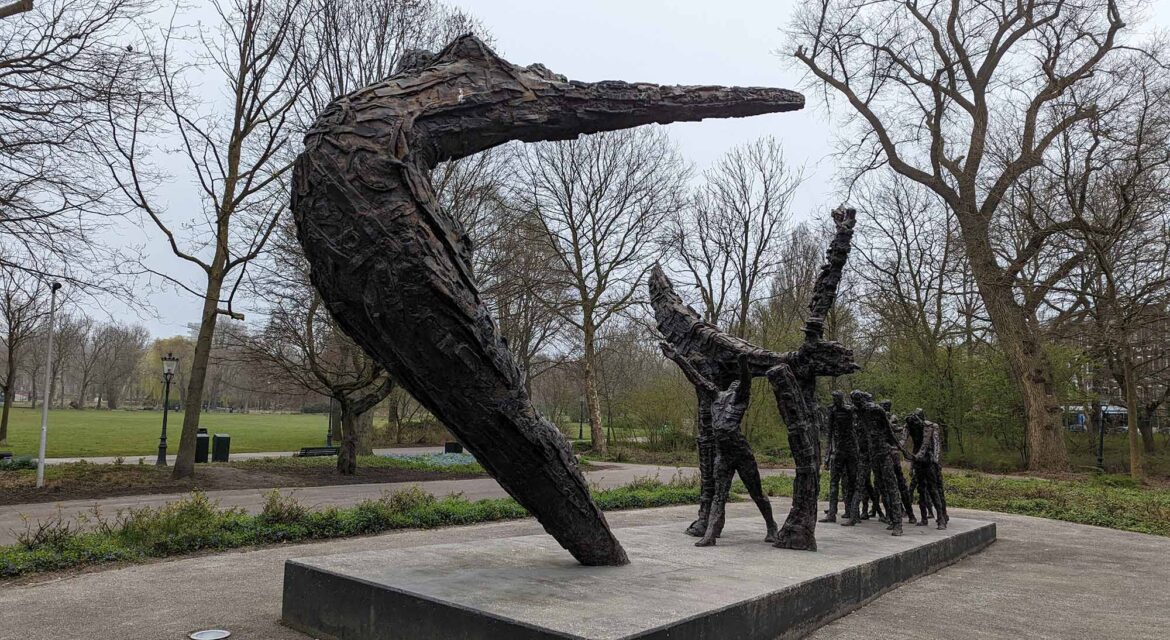 One of the top attractions in Oosterpark, the National Slavery Monument commemorates the abolition of slavery in the Dutch Kingdom. The monument allows audiences to truly experience a formative piece of history that has impacted countless individuals and an entire country, creating engagement that resonates on multiple levels.
One of the top attractions in Oosterpark, the National Slavery Monument commemorates the abolition of slavery in the Dutch Kingdom. The monument allows audiences to truly experience a formative piece of history that has impacted countless individuals and an entire country, creating engagement that resonates on multiple levels.

The History and End of Slavery in the Netherlands
 The Dutch were heavily involved in the transatlantic slave trade that began at the end of the 16th century and continued through the 19th century. During this time, the Dutch transported about half a million Africans across the Atlantic. While slavery was abolished in the Netherlands and in the Dutch colonies of Suriname in 1863, the impact of the country’s involvement in the slave trade would reverberate over the decades.
The Dutch were heavily involved in the transatlantic slave trade that began at the end of the 16th century and continued through the 19th century. During this time, the Dutch transported about half a million Africans across the Atlantic. While slavery was abolished in the Netherlands and in the Dutch colonies of Suriname in 1863, the impact of the country’s involvement in the slave trade would reverberate over the decades.
In 1998, the Afro-European women’s movement Sophiedela presented the government to put the commemoration of the country’s slavery past on the political agenda. After being approved, a design by Surinamese artist Erwin de Vries was chosen from a set of five. In 2002, this painful past would be commemorated with the dedication of the National Slavery Monument.
De Vries’ design is connected to the past, present and future of slavery in the Netherlands. While the piece collectively looks like the hull of a ship, the National Slavery Monument is comprised of numerous individual figures of varying shape and size. The rough and abstract form of each of these figures highlights how they could be anyone. The chains and compliant positioning that define these figures at the start represents the history of the slave trade, which gives way to these figures breaking free of these chains and forms at the end.
The National Slavery Monument was created to draw attention to the history of slavery in the Netherlands and how this legacy impacts society in the present. Designed to symbolize the solidarity through freedom that all Dutch people are part of and experience in different ways, the piece showcases what it can mean for a monument to connect individuals, history and entire societies.

‘Shared past, shared future’
 With the history and heritage of slavery being a sensitive topics in the Netherlands, the National Slavery Monument represents a powerful means of connecting with the legacy that this history represents for so many people. The words “shared past, shared future” reside on a marker on the sculpture, highlighting how it will continually represent the legacy of slavery in the present and for the future of the entire nation.
With the history and heritage of slavery being a sensitive topics in the Netherlands, the National Slavery Monument represents a powerful means of connecting with the legacy that this history represents for so many people. The words “shared past, shared future” reside on a marker on the sculpture, highlighting how it will continually represent the legacy of slavery in the present and for the future of the entire nation.

